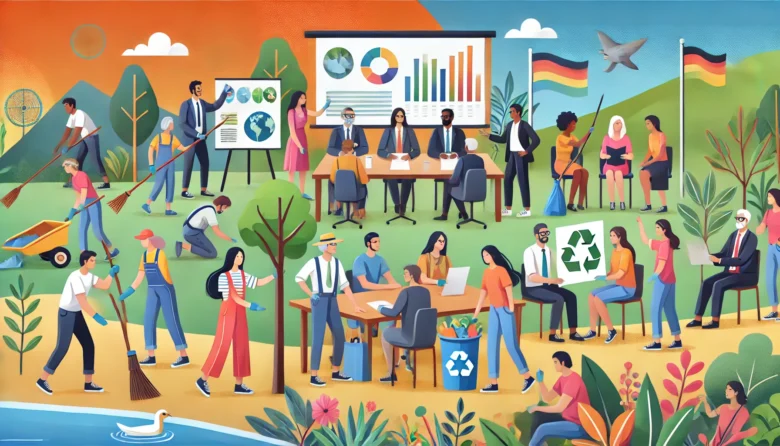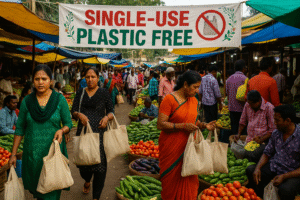Have you ever wondered about the role of gender in environmental advocacy? This topic is incredibly relevant today, especially in India, where many communities deeply feel the effects of climate change. Men and women experience these changes differently, and their contributions to environmental advocacy are shaped by their unique experiences and challenges.
The Intersection of Gender and Environment
In India, the relationship between gender and the environment is complex and multifaceted. Traditionally, women have been the primary caretakers of natural resources in rural areas. They are often responsible for collecting water, firewood, and other resources for their families. This close connection with nature makes women particularly sensitive to environmental changes and issues.
Men and Environmental Advocacy
Men, on the other hand, often have more access to formal education and employment opportunities, which can place them in positions of power where they can influence environmental policies and initiatives. However, this also means they are sometimes more removed from the immediate impacts of environmental degradation.
Women as Environmental Stewards
Women’s roles in environmental advocacy are crucial. They are the first to notice the depletion of resources and the first to suffer from the effects of climate change. Organizations like SEWA (Self Employed Women’s Association) have empowered women by providing them with education and resources to become active participants in environmental conservation.

Case Study: The Chipko Movement
One of the most famous examples of women’s involvement in environmental advocacy is the Chipko Movement. In the 1970s, women in the Uttarakhand region of India hugged trees to prevent them from being cut down by loggers. This movement not only protected forests but also highlighted the critical role of women in environmental protection.
Gender Equality and Environmental Sustainability
Gender equality impacts not only social and moral aspects but also environmental ones. Studies indicate that nations with greater gender equality generally achieve higher scores in environmental sustainability. Women bring different perspectives and solutions to environmental challenges, often focusing on long-term sustainability rather than short-term gains.
Challenges Faced by Women in Environmental Advocacy
Despite their significant contributions, women in India face many challenges in environmental advocacy. Cultural norms and gender roles can limit their participation in decision-making processes. Lack of access to education and resources further hinders their ability to advocate for environmental causes effectively.
Breaking Barriers
Promoting gender equality across all areas of society is vital to overcoming these challenges. Ensuring women have access to education, resources, and opportunities to make decisions is crucial. Initiatives like the Ministry of Women and Child Development’s efforts to empower women economically and socially are steps in the right direction.
The Contribution of Men to Advancing Gender Equality in Environmental Advocacy
Men also have a vital role in promoting gender equality in environmental advocacy. By supporting and collaborating with women, men can help break down the barriers that hinder women’s participation. This joint effort can result in more effective and enduring environmental solutions.
Local Success Stories
Solar Mamas
The Barefoot College in Rajasthan trains rural women, often referred to as “Solar Mamas,” to become solar engineers. These women then bring solar power to their communities, promoting sustainable energy while also challenging traditional gender roles.
The Green Schools Programme
Run by the Centre for Science and Environment (CSE), this initiative includes both boys and girls in environmental education and activities. By engaging children from a young age, the program fosters a sense of responsibility and advocacy for the environment.
How You Can Get Involved
Whether you are a man or a woman, there are many ways you can contribute to environmental advocacy in India. Here are a few suggestions:
Educate Yourself and Others: Learn about environmental issues and share your knowledge with your community.
Support Women-Led Initiatives: Many women-led organizations and movements need support, whether through donations, volunteering, or simply spreading the word.
Advocate for Policy Change: Engage with local and national policymakers to push for gender-inclusive environmental policies.
Sustainable Lifestyle Choices: Adopt and promote sustainable lifestyle choices that reduce your environmental impact.
Conclusion
The role of gender in environmental advocacy is crucial and multifaceted. By acknowledging and addressing the distinct challenges and contributions of both men and women, we can strive for a more sustainable and just future. Everyone has a part to play in this important movement, and together, we can make a significant difference.
Author’s Note
Thank you for taking the time to read this blog. As someone passionate about both gender equality and environmental sustainability, I hope this article inspires you to reflect on these important issues and take action in your own way. Let’s work together to create a better future for all.
G.C., Ecosociosphere contributor.




